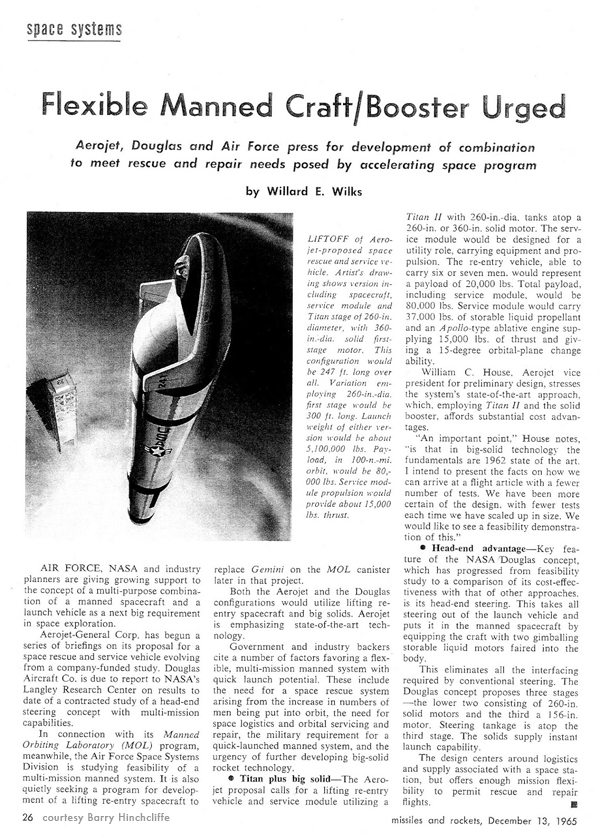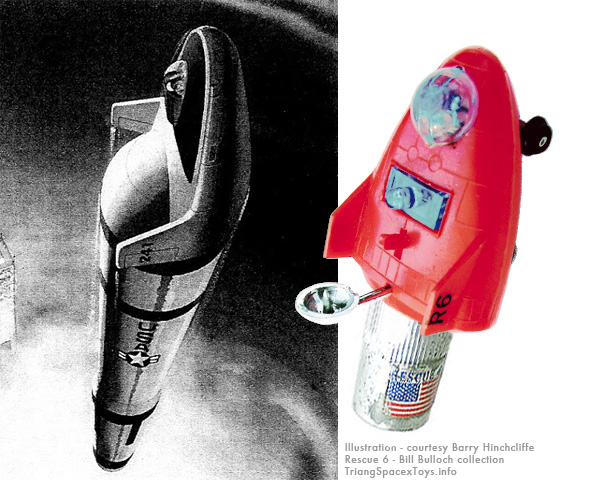
Without the state of Ajman, the smallest of the United Arab Emirates, we might not have known where the origin of the Spacex Rescue craft came from. Ajman has produced many series of fine postage stamps celebrating space exploration (although on occasion blatantly copying the illustrations of Ed Valigursky and photos of test vehicles), which Paul Woods discovered on one of his thorough trawls of the internet.
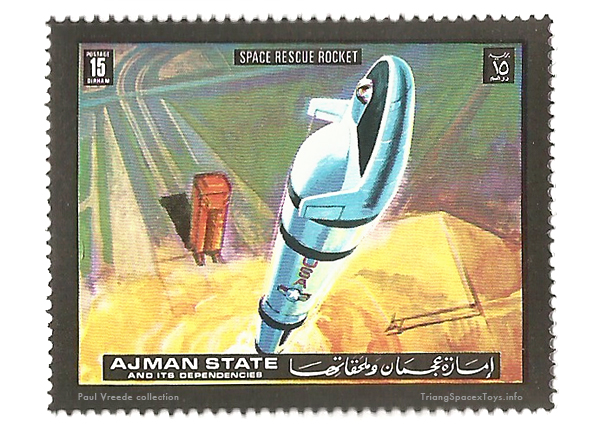
After Paul posted a piece about his philatelic discoveries (1), blog reader Barry Hinchcliffe sent in a scan of an article from Missiles and Rockets magazine, dated 13 December 1965. Which shows the illustration that was copied for the stamp, and identifies it as being a concept from the Aerojet company for a lifting body-type of rescue and repair shuttle being launched into space by a Titan rocket. The illustration itself we had seen before in Bill Bulloch's childhood copy of the Daily Mirror Book of Space from 1970, but now we know exactly what it was.
A rescue and repair craft fitted in with the optimistic visions at the time of establishing space stations as a base for further research and exploration. The idea of launching shuttles on top of missiles was nothing new; in fact most early concepts from the 1950s had included the idea in some shape or form. Serious projects had been undertaken as well, such as the X-20 Dyna-Soar by Boeing for the US Air Force which came a long way before being cancelled in 1963 (due to uncertainty about the booster rocket and unclear project objectives combined with high cost) (2). Emphasis had also shifted towards space capsules to carry astronauts into space until the NASA lifting body programme (much cheaper than the X-20 project) started proving that shuttle-type spacecraft were very much feasible and effective.
The main issue however was the huge cost of sending anything into space, using very expensive boosters that were used only once. Numerous studies were undertaken by NASA, the Air Force and the aerospace contractors for all manner of reusable boosters and other shapes of spacecraft, and it is here that the Aerojet proposal must have tied in. As is shown in the illustration below, three classes of reusable spacecraft were being considered, offering greater degrees of reusability. However, the more reusable the idea, the farther away it was from being feasible, and as events turned out even the Space Shuttle was still a class I vehicle where only the Shuttle itself was reusable. Although Aerojet proposed a low-cost solution using many existing systems, the reusability factor was also of limited value.
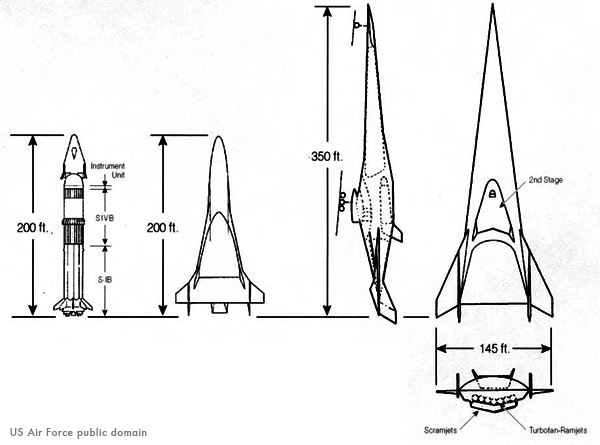
Original caption: Three classes of advanced launch vehicle studied in 1966.
Left, Class I: a piloted spacecraft resembling Dyna-Soar, launched by a Saturn I-B.
Center, Class II: a two-stage fully-reusable space shuttle with rocket propulsion in both stages.
Right, Class III: space shuttle with airbreathing engines in the first stage. (4)
In the end, it took much longer to establish a space station; Skylab only being sent into orbit in 1973 (3). It was built on a much less grandiose scale than the early concepts, because advances in technology had meanwhile allowed satellites to do a lot of the work that had earlier been planned for humans aboard a station. Apollo craft brought crew and supplies to Skylab, with one on standby for use in emergencies obviating the need for a specialised craft. By the time the International Space Station was established, Space Shuttles were available for transport and supply, being a more general craft that could perform a much wider variety of missions.
Coming back to the Spacex Rescue Craft, the engine exhaust can be identified as having been based on parts of the Airfix Saturn V kit as Bill Bulloch once pointed out to me. And perhaps the loose rocket stage will also be based on a model kit or other.
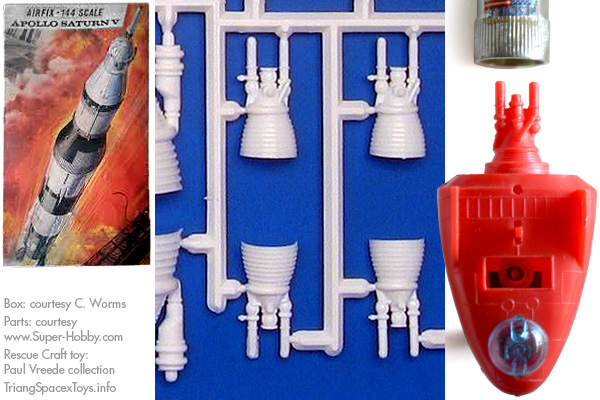
The Airfix box is contemporary with the toy; the parts are from a recent reissue of that kit
(so may possibly have been updated in the meantime).
The twin tails of Rescue 6 are very much like those of the M2-F2 lifting body, whereas those on the Spacex Lifting Body are more like those on the Aerojet craft. Perhaps the designers swapped them round? :)
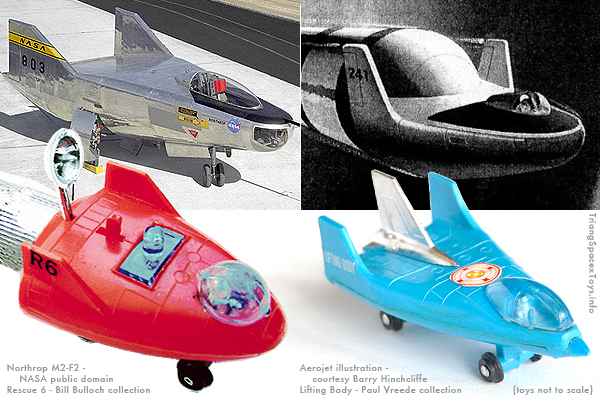
Looks like a tail swap.
External links open in new windows - just close them to get back here.
1: See Paul's post on postage stamps with space toy connections. back to text
More on Wikipedia about
2: the X-20 Dyna-Soar. back to text
3: Skylab. back to text
4: source: halfway down in chapter 2 of "The Space Shuttle Decision" on the NASA history site. back to text
